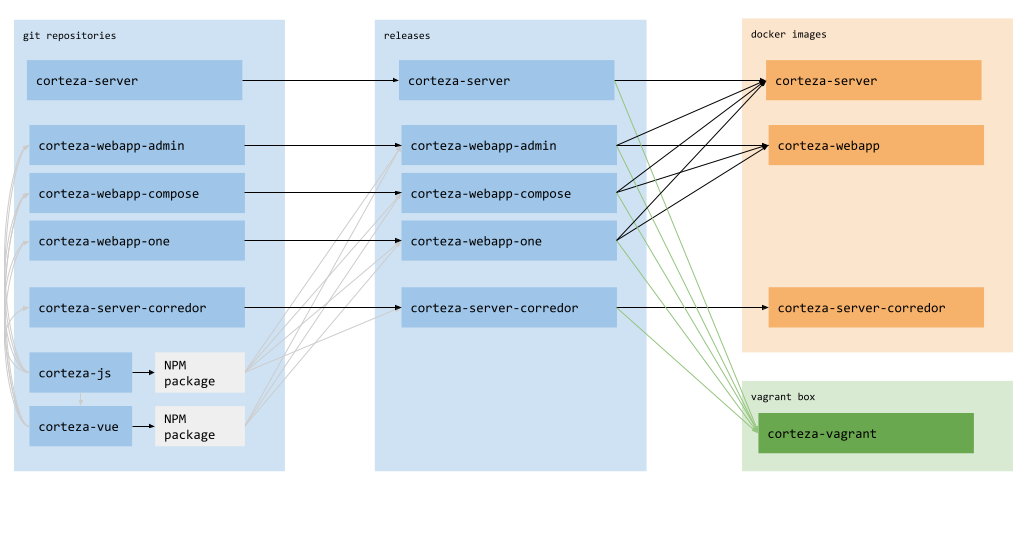Corteza Core Repositories

Dependency warnings
Go over each repository and (try to) assure that there aren’t any warnings with any of the dependencies. GitHub provides a friendly system for this, so that shouldn’t be an issue.
-
corteza-js: (https://github.com/cortezaproject/corteza-js)
-
corteza-vue: (https://github.com/cortezaproject/corteza-vue)
-
corteza-server-corredor: (https://github.com/cortezaproject/corteza-server-corredor)
-
corteza-webapp-one: (https://github.com/cortezaproject/corteza-webapp-one)
-
corteza-webapp-admin: (https://github.com/cortezaproject/corteza-webapp-admin)
-
corteza-webapp-compose: (https://github.com/cortezaproject/corteza-webapp-compose)
-
corteza-webapp-workflow: (https://github.com/cortezaproject/corteza-webapp-workflow)
Versioning
Bump the version of the NPM packages, following the CalVer standard; for example, 2020.9-rc.1.
Released versions should also be tagged. .Use this Git command to get it done:
# $V is the version; for example export V=2021.6.0;
git tag $V && git push origin $V;NPM packages
|
The rest of the repositories depend on these two, so you should handle them first. |
Steps to release:
|
|
Steps to release:
|
Web applications
-
bump the version
-
run
yarn cdepsto update all required Corteza dependencies -
commit the changes
-
tag the version
-
corteza-server: (https://github.com/cortezaproject/corteza-server)
-
corteza-server-corredor: (https://github.com/cortezaproject/corteza-server-corredor)
-
corteza-webapp-one: (https://github.com/cortezaproject/corteza-webapp-one)
-
corteza-webapp-admin: (https://github.com/cortezaproject/corteza-webapp-admin)
-
corteza-webapp-compose: (https://github.com/cortezaproject/corteza-webapp-compose)
-
corteza-webapp-workflow: (https://github.com/cortezaproject/corteza-webapp-workflow)
Binaries & Bundles
All of the outputs are stored on the https://releases.cortezaproject.org/files. When building the Docker images, the sources are taken from the storage mentioned above.
The Docker images are placed on the DockerHub.
Unofficially, you can use the released packages with a Vagrant box https://github.com/cortezaproject/corteza-vagrant.
Alternatively, you can (build and) install these packages manually, either on the virtual machine or a regular machine.